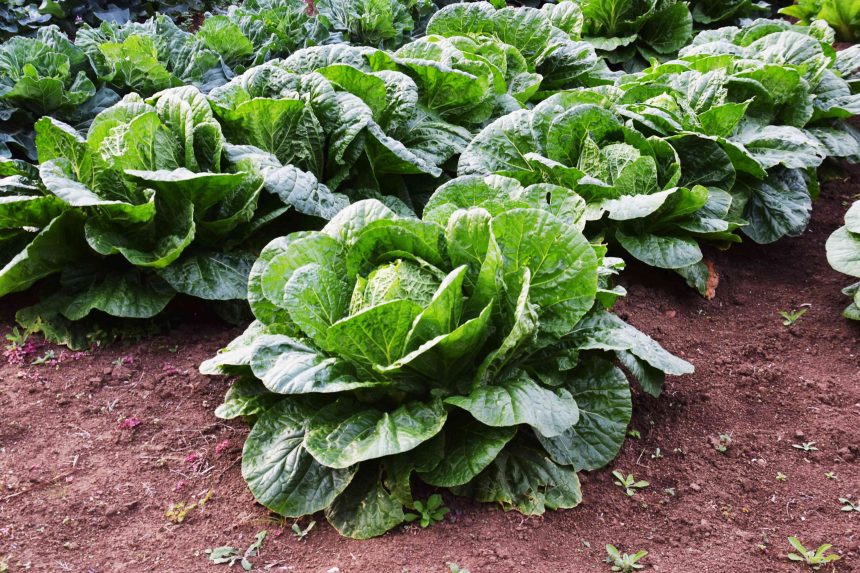Cabbage (Brassica oleracea var. capitata) is perfect for the home gardener. It’s easy to grow and harvest and has ornamental characteristics, adding beauty to any landscape. Plus, it goes a long way in the kitchen, starring in everything from hearty dishes like corned beef and cabbage to simple sides like coleslaw.
Many cabbage varieties thrive in USDA zones 1 through 9. A low-maintenance garden vegetable, cabbage is adaptable and can handle colder temperatures. As long as it’s given ample sunlight and nutrient-rich soil, this plant will yield a bountiful harvest. Read on for how to grow and care for cabbage and expert-approved tips for harvesting, storing, and troubleshooting common issues.
- Valeria Nyman, gardener with over 20 years of experience and the chief product officer at Taim.io, a platform that helps people learn how to grow their own vegetables.
- Christy Wilhelmi, owner of Gardenerd, a resource for all things garden-related.
- Tammy Sons, plant and gardening expert and owner of TN Nursery.
Select the Cabbage Type
Part of the Brassica oleracea family, there are many types of cabbage to grow. The variety you choose for your vegetable garden will depend on your specific USDA hardiness zone. Consult your local plant nursery or state or county extension service before ordering cabbage seeds. These varieties are some of our experts’ favorites:
- Black cabbage
- Choy sum cabbage
- Green cabbage
- January king cabbage
- Red cabbage
- Savoy cabbage
- Napa cabbage
- Bok choy
- Leaf cabbage
When to Plant Cabbage
When to plant cabbage depends on the type you’re growing. “Generally, you plant seeds 6 to 8 weeks before the last frost for spring crops, or in mid-summer for fall harvests,” says Valeria Nyman, the chief product officer at Taim.io.
Cabbage is typically a cool-season vegetable. If you live in climates with mild to warm winters, cabbage seeds can be sown in early fall for a winter harvest. “In climates with frost and snow, fall planting with protection works, but spring planting is recommended,” says Christy Wilhelmi, owner of Gardenerd.
How to Plant Cabbage
Cabbage is a versatile plant. You can plant your cabbage from seed directly into the ground, or you can buy the plants as seedlings and transplant them outdoors.
Planting from Seed
Cabbage seeds can be sown directly in the ground. Avoid planting the seeds too close together, which is especially important for larger varieties, says Nyman. “Cabbage roots seem to love to stretch,” she says. “So, you will want to give your cabbage room to grow and spread out.”
- Pick a site with well-draining soil. Loosen the soil with a garden rake, breaking up the larger clots of dirt.
- Mix compost into your soil.
- Plant seeds 1/4-inch deep, spacing each seed 18 to 24 inches apart.
- Water frequently and add compost every few weeks after planting.
Buying Seedlings
You can also purchase cabbage seedlings from a plant nursery and transplant them outdoors once the seedlings have a few sets of true leaves.
- Dig a hole in your well-draining soil as large as the rootball.
- Break apart the root ball slightly, then place it in the hole and backfill with soil.
- Water the soil frequently to keep it consistently moist.
How to Care for Cabbage
Keep your cabbage plants strong and healthy by maintaining the best growing conditions.
Sunlight
Cabbage needs six hours of direct sunlight in order to thrive. That said, a little shade is fine in hotter climates, say our experts.
Water
Cabbage plants prefer moist soil to grow large leafy heads. Dry spells lead to split heads and irregular watering can create a bitter flavor, says Nyman. However, you don’t want to drown your cabbage either. Too much water can lead to root rot, says Tammy Sons, owner of TN Nursery. Instead, give your cabbage about 1 inch of water per week, watering it a little bit in the morning each day to keep the soil moist.
Soil
Loamy, well-draining soil with a pH between 6.5 to 6.8 is ideal for cabbage. “But it will grow fine in soils with a pH of 7.2,” says Wilhelmi.
Temperature
Cabbage thrives in cooler temperatures ranging from 55 to 75 degrees Fahrenheit. Growth will slow dramatically in climates that are too hot.
Fertilizer
Cabbage prefers soil rich in organic matter. “Fertilize monthly with a balanced organic vegetable fertilizer mixed with some compost or worm castings,” Wilhelmi says. Continue applying compost to the soil throughout the growing season.
How to Start Seeds Indoors
You can also start cabbage seeds indoors rather than direct-sowing outside. Start them four to six weeks before the last frost falls.
- Fill a seed tray with well-draining soil. Water the medium.
- Plant a few seeds in each tray cell about 1/4-inch deep.
- Place the trays in an area with bright sunlight or use grow lights.
- When the seeds grow at least one set of true leaves, transfer them to 4-inch pots with fresh soil.
- Water the soil frequently to keep it consistently moist.
How to Transplant Cabbage
Once the seedlings have four to six sets of true leaves, they can be transplanted outside. Cabbage plants hate root disturbance, so handle the plant with care when transplanting. Gradually introduce the plants to outside conditions by placing them outside for a few hours, then longer the next day. After a week of this, you can plant the seedlings in the ground.
- Dig a hole in your well-draining soil.
- Gently remove the seedling from its container, keeping the roots intact.
- Plant the seedling in the hole and backfill with soil. Space each seedling 12 to 18 inches apart.
How to Harvest and Store Cabbage
Harvest cabbage when the head feels firm, usually 70 to 100 days after planting, depending on the variety. However, it is best to harvest the plants after a light freeze, as they become sweeter during this time, says Wilhelmi. To harvest cabbage, use a sharp knife or garden shears to cut the stem at the base of the plant.
For the best cabbage storage, opt for a cool place. “A fridge works fine for up to three weeks, or in a root cellar up to two months,” says Nyman. “Wrap them lightly in plastic if humidity is low.”
Common Problems with Cabbage
Cabbage plants do come with a few challenges, from attracting common garden pests to falling prey to disease. But the good news is that many of these issues can be avoided with a few quick fixes.
Cabbage Moths
White moths lay their eggs on the underside of most brassicas, including cabbage. “Those eggs hatch into tiny green worms that eat through the layers of cabbage and leave behind droppings between leaves,” says Wilhelmi.
The best and simplest solution is to cover the cabbage crop with a floating row cover after planting. “This white gauzy fabric prevents moths from landing on the leaves, so they can’t lay eggs.” You can also hand-inspect your plant’s leaves every two days and remove any cabbage moths you find.
Diseases
Cabbage is also known to be susceptible to diseases like clubroot and black rot. “But these can be avoided by rotating your crops and making sure the soil is drained well,” says Sons. To further avoid diseases from taking root in your cabbage, test your soil’s pH balance, keeping it near 7.0 for the best results.
Aphids
Aphids are common garden pests that love cabbage. To prevent aphids, choose floating row covers or pick the pests off by hand. Alternatively, you can companion plant by growing vegetables, herbs, or flowers like marigolds that ward off these pests, says Nyman.








